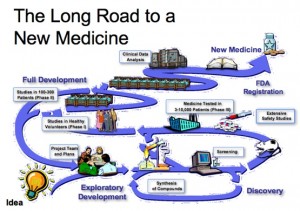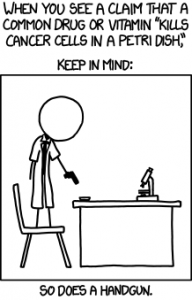Hey, remember that miracle baby that was found to be HIV-free?
No? What about the HIV-killing bee venom?
How about the cure for all cancer, courtesy of you friendly neighbourhood mole-rat? They all sound so promising, don’t they? All the talk with “foresee[ing] a day when the … treatment could give … a lifetime free of toxic and costly antiviral drugs” and “radically and potentially life-saving treatment[s]“. At this rate, it sounds like the new “wonder-drugs” are just around the corner; and when they hit the pharmacies and hospitals, the world will be a much, much better place.
So where’s the cancer drugs? Why aren’t pharmaceutical companies scrambling to raise beehives to harvest bee venom? And why are doctors still prescribing antivirals to HIV+ patients? What happened to those “major breakthroughs” and “game-changers”? To make a long story short, science doesn’t work like that. The science behind new drugs is a well-tested and extensively researched, and it follows a rigorous process.

“LONG ROAD TO A NEW DRUG” by Lizanne Koch – own work. Via Wikibooks.
The development of a new drug begins with a breakthrough in research – things like a new therapy target, or a new way of treating a condition. A classic example of this is the key development in HAART therapy towards controlling the HIV virus, as shown in the video in detail.

After first observing AIDS in the US in 1981, it took two years for researchers to confirm the source of the symptoms as the HIV virus in 1983, and another 4 years for the FDA to approve azidothymidine/AZT, one of the first antiviral drugs effective against suppressing HIV. The video describes the molecular mechanism of AZT:

Of course, AZT was ripe with side-effects; it took until 1991 for researchers to find effective antivirals which minimized the side-effects. The entire process to develop today’s HAART took just over 10 years – hardly “around the corner”. And this is a process repeated by many of the novel drugs proposed in academia – it takes DECADES, if not years to develop a drug that is safe and effective.
So, where do all those “break-throughs” fit in? Well… That’s the thing. Even though science makes discoveries in cutting-edge fields on a daily basis, it takes months, if not years of follow-up experiments to confirm the results. Adding this to the arduous process of drug development, it may be a long, long time before a viable drug is developed, assuming the new proposed drug holds up in the experiments and the clinical trials. Of course, one can only hope that the breakthrough doesn’t turn out to be a false-positive, like the (ex-)HIV-free baby.
As for the daily media sensationalist titles, they may sound hopeful and optimistic (not to suggest that they’re not), but the point is to take them with a grain of salt. After all, a disease takes years to be understood scientifically, and longer still to develop a working treatment. And of course, always remember:
– James L.

